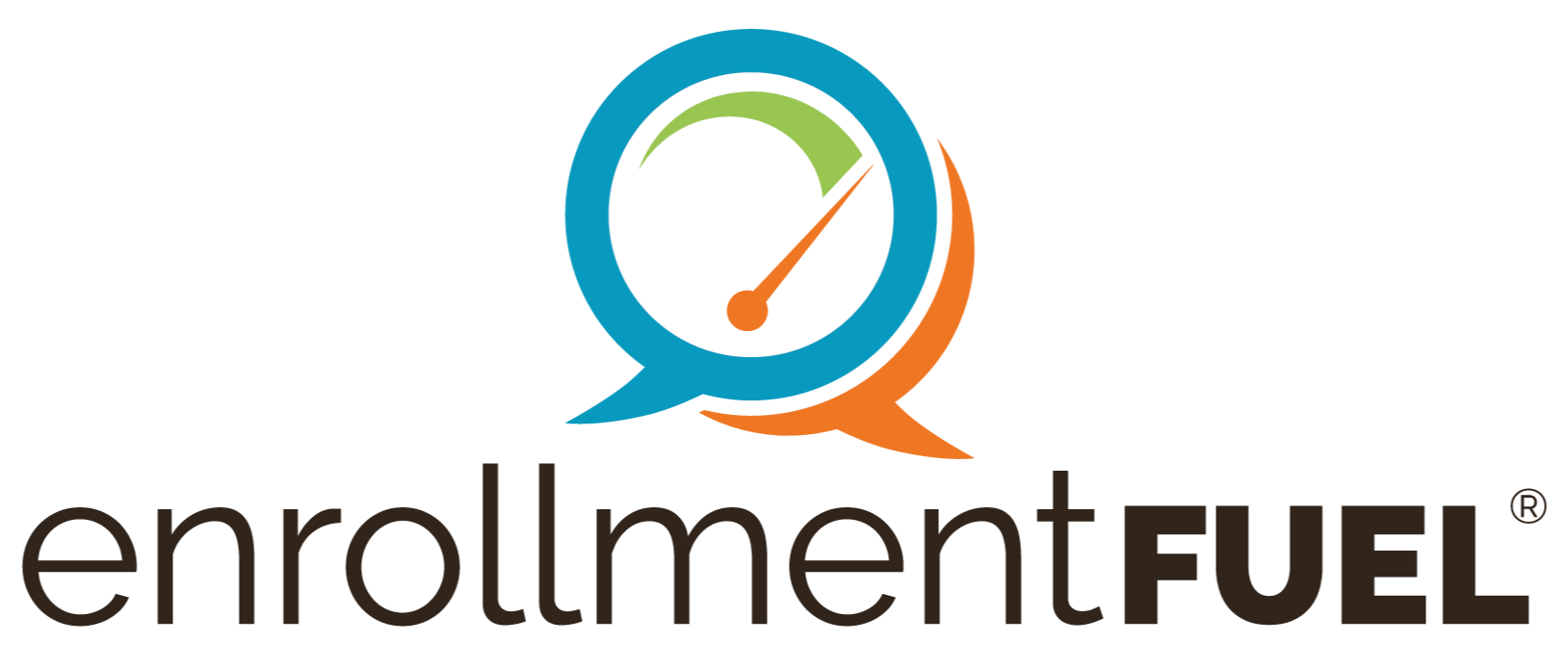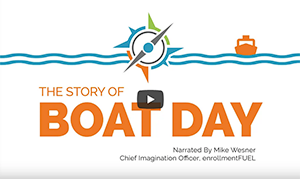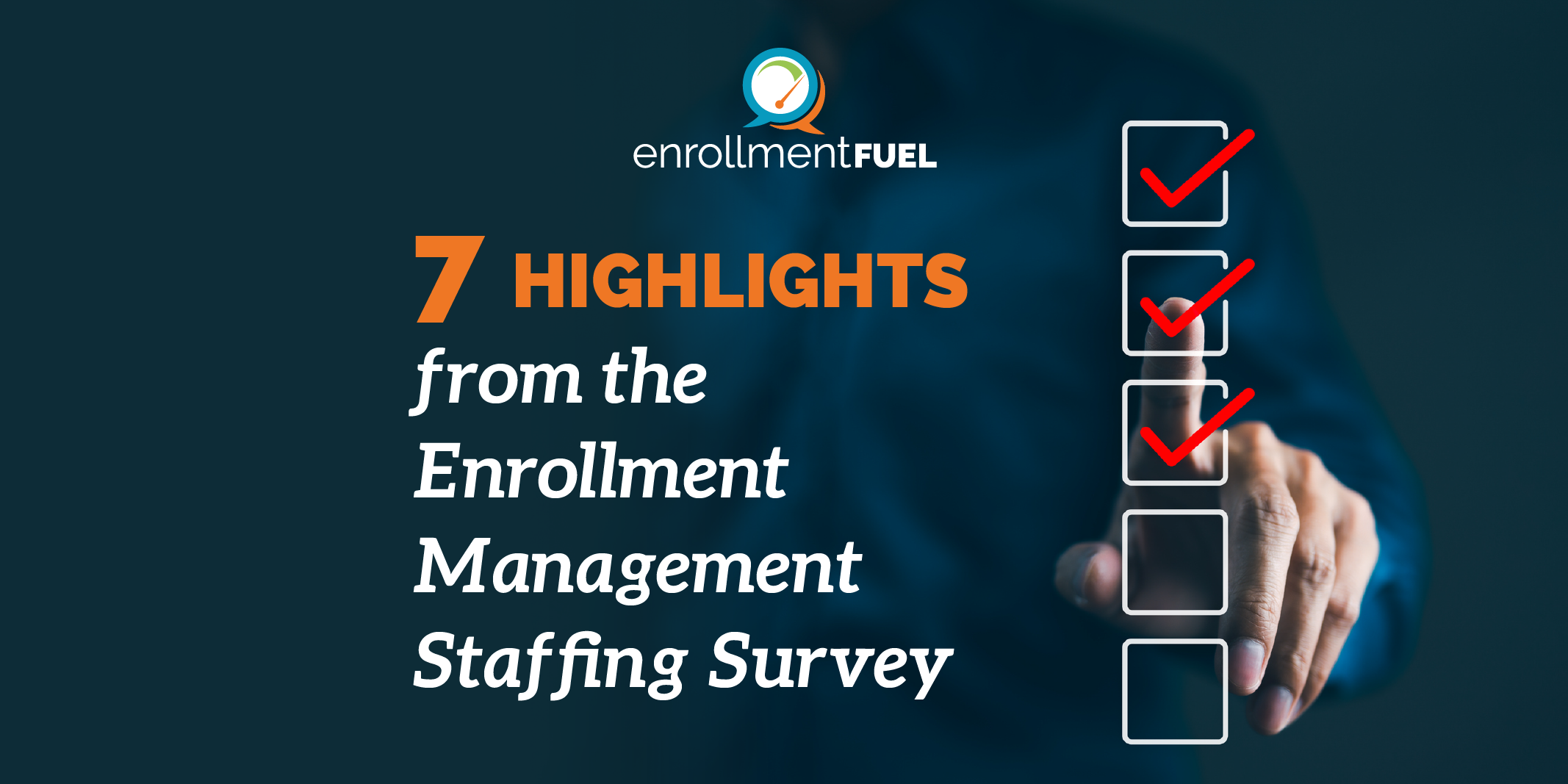Introduction from Mike Wesner
In 2011 I attended a session at the Direct Marketing Association’s annual conference. The presenter was Alan Rosenspan, and his topic was increasing direct mail response rates. At the time, I understood the importance of the “call to action,” but Alan introduced me to the importance of the “reason to believe.” Or to put it another way, if you make a claim, you need to explain why the claim is true.
As we head into another cycle, we asked Alan for permission to reprint his online article, “Do You Make These 7 Mistakes in Direct Mail?” While Alan’s examples focus on business, the wisdom he shares can be applied to educational institutions, too. Enjoy!
We all make mistakes from time to time, but the trick is to only make the same mistake once. And so, having created, evaluated and reviewed thousands of direct mail packages around the world, I’d like to share some mistakes that I have seen over and over again.
Just Sell Benefits
We’ve all been told that benefits are the most important thing you can tell people. They want to know "WIIFM" — What’s in it for me? Why should I buy your product? How does it benefit me? What do I get?
In other words, don’t just tell me that your car comes with anti-lock brakes because that’s a feature. Tell me that it’s a lot safer and easier to drive, even in wet weather. Because that’s a benefit. But benefits alone are not enough. And there is some evidence to suggest that people are motivated more by the avoidance of pain, than the promise of pleasure. A study by an energy company proved it. The study was done among people that had energy audits. The person conducting the audit asked the homeowner one of the following questions:
"Did you know you can save an extra 75 cents a day by implementing these recommendations?"
"Did you know it costs you an extra 75 cents a day if you don’t implement these recommendations?"
Which do you think was more effective?
If you selected the second one, you’re absolutely correct. So how could this work in direct marketing? You may be able to improve response by focusing on what will happen to your prospect if they don’t use your product or service. As an example, we did two mailings for a software company that focused on ISO 9000 certification. The first mailing talked about how the software could help you pass certification and included all the benefits. It was a large and expensive mailing. The second mailing was a simple #10 letter package. The outer headline read, "ISO 9000 certification. Will your company fail?" This was the winning package.
Don’t Show Your Target Market
I did a seminar for a travel company that focuses on the 45 to 65-year-old market. (One of the fastest-growing segments of the travel industry) On the cover of their catalog, they had an adorable photograph of a cute little Dutch girl. What’s wrong with this picture?
The humorist Robert Benchley once wrote, "There are two classes of travel…first-class and with children." The very last thing that the average older adult wants on their vacation is to deal with children. Instead, I recommended that they show an attractive couple, in the right age range, that will immediately communicate the fact that this catalog and these vacations are for people aged 45 to 65.
One of the first questions any prospect will have about your product is, "Who’s it for?" By showing a photograph of your target customer right at the beginning, you can answer that question and establish a rapport with your prospects.
Don’t Show Your Product in Use
Business-to-business advertising almost always gets lower readership scores than consumer advertising — even though it appears in more targeted publications. The reason? Most business advertising never shows the product in use. Most business ads have pictures of boxes, or "concepts" or anything except the product. While I realize this may be difficult to do when you’re selling high technology products or even financial services, it’s well worth the extra effort. And if you can’t show the product in use, at least show happy people benefiting from it.
Don’t Worry About the Offer
If your product is good enough, you don’t really need an offer, do you? Let’s look at an innovative company called Working Assets. Working Assets is a long-distance company that really tries to make a difference. They take 1% of their revenue and donate it to nonprofit groups working for peace, human rights, education, and the environment. And they’ve donated over 30 million dollars since they began in the mid-’80s.
Working Assets also has an innovative program that alerts their customers to important issues and allows them to call specific decision-makers — such as members of Congress — absolutely free. So, you can make your voice heard. Plus, they are the only long-distance company that prints invoices on unbleached 100% post-consumer recycled paper. And they plant 100 trees for every ton of paper they use. It would seem that a company like this wouldn’t need to make an offer to get new customers. After all, as they say, "Every call you make helps build a better world."
However, they’ve found that offers are critically important — and after years of testing, they’ve found one that has been absolutely unbeatable. When you switch to Working Assets, you get a free pint of Ben & Jerry’s ice cream every month for an entire year. Or as they say, "Sign up for Working Assets and a deal so good you can actually taste it." If your offer isn’t as irresistible as free ice cream for a year — you may want to keep testing.
Don’t Let Me Postpone My Decision
Several years ago, I had a boss who always asked me two questions whenever I wanted to purchase something like a new computer. The first was pretty simple. He’d ask, "Why do we need it?" And in fact, most salespeople are trained to give their prospect what’s known as "the elevator pitch."
It’s called that because you’re supposed to be able to provide, in the course of a short elevator ride, a fast explanation of why you need the product. I could usually answer this question, but his next one often threw me, "Okay, why do we need it now?"
In today’s economy, it is not enough to give people a reason to buy your product and service. You must also give them a compelling reason to act now. The CEO of a high technology company recently wrote, "Companies are being much more selective. Even after our salespeople have convinced the chief information officer of the product’s technical merits, the chief financial officer's decision takes forever."
This principle, by the way, can also be applied to your offer. Don’t leave it open-ended -- put a deadline on it. "You must respond within 30 days" can be an excellent way of increasing response.
Don’t Use "Adspeak"
Speaking of travel, a friend of mine used to be the editor of Travel & Leisure magazine. She read dozens of prospective articles every month. Whenever she came across a certain phrase, she would immediately stop reading and reject that article. The phrase was "A study in contrasts…" It was used to describe countries, cities, restaurants, just about everything, and it appeared in at least five articles a month.
In advertising and direct marketing, you must resist using cliches, clever lines, or headlines that impart no actual information. People either tune them out or just don’t read them. For example, a recent ad in BusinessWeek was for AMD (I’d never heard of them either) Their headline across a 2-page spread — costing over $100,000 — said: "AMD Makes it Possible." That’s Adspeak, and it really doesn’t mean a thing. However, in the copy of the ad, they mentioned that they were able to help a famous auto company cut their design time on a new electric vehicle from one year to 10 weeks.
A headline of "How AMD Cut Design Time from 12 Months to 10 Weeks" is much more specific, and much better.
Don’t Lead Them On
The University of Maryland didn’t want their students to trample all over the grass on their new main promenade. So they planned to put concrete paths to connect the buildings. However, instead of arbitrarily putting in concrete paths, they waited a month or two.
In that time, the students naturally created several paths through the grass as they walked from class to class. Only then did the University add the concrete — and only where the students actually walked.
In many direct marketing packages, there is no natural path to follow; no direction for the reader. There’s often not even a clue on what the most important part of the package is, or why the prospect should respond.
Here’s a Final Tip
I know I promised you 7, but there’s one more that I wanted to save to the end — because that’s exactly the mistake that some people make: Assume People Will Read Every Word.
They won’t. I can’t tell you how many direct mail packages I’ve looked at where they "save the best for last." Unfortunately, the only person who got that far was the copywriter and the client.
That’s why it is absolutely essential to:
- Put your main benefits in your headlines and other prominent places.
- Put strong, selling captions under every photograph — after headlines, they are the "most read" part of any ad or direct mail piece.
- Highlight news, don’t bury it.
- Make sure the offer stands out, even when you quickly scan the package.
- Tell people exactly what you want them to do. (And that’s exactly what I’ve done below)
Written by Alan Rosenspan and Reprinted with Permission
Related Articles
THE ENROLLMENT MANAGEMENT YEAR IN REVIEW
Well, here we are nearing the end of 2020. I am sure most of us in enrollment management are more...
Mid-year Pivot?
We have passed the fall mile markers. September/October travel season. Check. Thanksgiving. Check. ...
Three Waves Effective Enrollment Leaders Ride
I’VE ALWAYS BEEN AN EARLY ADOPTER.
I always tried to do things first. In the sixth grade, I was one...




